
about me
Anyone who knows me is aware that I am a bit of a movie buff. Over the past few years I have been building an autograph collection of my favourite actors’ signed photographs. Since I like movies so much there are many actors whose work I enjoy. I have collected the photographs from the actors themselves, through contacts in the studios and through auctions. I now have over 2,000 photographs in the collection.
My Autograph Collection
I have separated my autograph collection into different categories, which you can see below. Feel free to browse whichever section interests you. Inside, I share not only the autographed photo in my possession, but also information about the actor, including their biography, photos and posters of their movies, and sometimes videos dedicated to them.
Whether you’re drawn to classic Hollywood icons, contemporary superstars, or character actors with a cult following, there’s something in my autograph collection for every movie enthusiast. If you enjoy my blog, don’t hesitate to leave a comment on one of my entries.
Actors Autograph Collections
Blog Categories
BRITISH ACTORS
Collection of Classic Brittish Actors
IRISH ACTORS
Collection of Classic Irish Actors
HOLLYWOOD ACTORS
Collection of Classic Hollywood Actors
EUROPEAN ACTORS
Collection of Classic European Actors
CONTEMPORARY ACTORS
Collection of Classic Contemporary Actors
RECENT POSTS
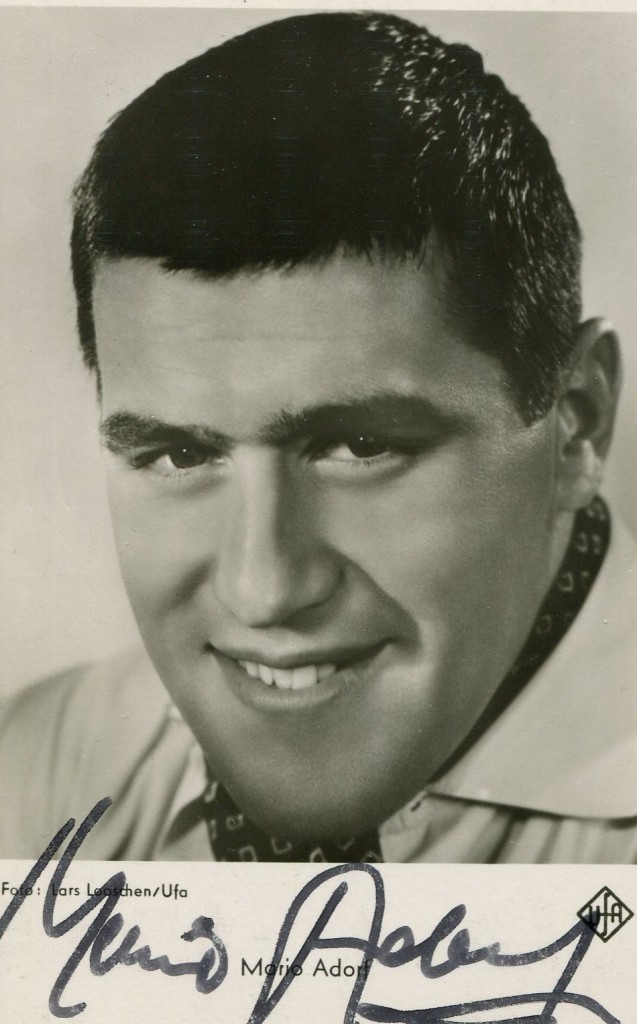
Mario Adorf was born in Zurich, Switzerland. He made his film debut in 1954 in “08/15”. He has made many fims on the European continent with very occasional forays into international film including “Station Six-Sahara” with Carroll Baker in 1962 and three years later “Major Dundee” with Charlton Heston and Richard Harris.
IMDB entry:
Mario Adorf, a tell-tale name indeed. Mario calls to mind the actor’s Italian roots (his father was a Calabrian surgeon) whereas Adorf reveals his German origins (his mother was a radiologist from German-speaking Alsace). As for the full name Mario Adorf it echoes to perfection the international character of this living legend’s long career. Born in 1930, Mario Adorf was still studying drama at the famous Otto Falkenberg School in Munich when he landed his first role in the first installment of the “O8/15” series in 1954. It was a small part but it didn’t go unnoticed and got him new roles in German films, the most remarkable of which being that of Bruno Lüdke, the mentally retarded serial killer in Robert Siodmak’s 1957 masterpiece “Nachts, wenn der Teufel kam”. It earned him his first prize (the German Film Award of the outstanding young actor of 1958). After this Mario Adorf’s career turned international. His Mediterranean looks, his rugged face, his dark oily frizzy hair and his volubility made him an ideal villain in European-made westerns, spy or mafia films. These flicks – made in the 1960s – were mostly just commercial and Adorf hammed his parts but he did it so brilliantly that he alone made them watchable. From the 1970s on, the quality of his films improved and Adorf could lend his remarkable acting talents to more ambitious works such as “Il Delitto Matteotti”, in which he was a striking Mussolini, or “Die Blechtrommel”, where he was terrifying as a boorish grocer contaminated by Nazism. The list of great directors he worked with is impressive: Robert Siodmak, Volker Schlöndorff, Wolgang Staudte, Michel Deville, Dino Risi, Mikhaïl Kalatozov, Luigi Comencini, Peter Fleischmann, Billy Wilder, John Frankenheimer, Claude Chabrol, Fassbinder… Likewise he served many a great author, either in the theatre (Shakespeare, Tennessee Williams, Richard Nash) or the big or small screen (Grass, Böll, Schnitzler, Heny Miller, Joseph Conrad, Gorky, Patrick Süskind…). He also sang and wrote books (five novels and one memoir). Hyperactive for more than fifty-five years now, Mario Adorf, still in fine form at the age of seventy-eight, is still … hyperactive!
The above IMDB entry can be accessed online here.
- Liam
- No Comments

Sami Frey was born in 1937 in Paris. He made his film debut in 1956 with “Pardonnez nos offenses”. His other films include “Cesar et Rosalie” with Romy Schneider in 1972 and “Black Widow” in 1987. His most recent film “Mensch” was released in 2009.
TCM Overview:
A handsome dark-haired French actor, Sami Frey began his career as a teen actor on stage and in features. His screen profile increased in tandem with the rise of the French New Wave and he enjoyed early success in Agnes Varda’s “Cleo From 5 to 7/Cleo de 5 a 7” (1962) and Jean-Luc Godard’s “Bande a Part/Band of Outsiders” (1964). A prolific actor with more than 50 films to his credit, Frey often was cast as the eccentric. During his long career, he worked for some of the leading filmmakers including Jean-Paul Rappeneau (“Les Marie de l’an II” 1971), Marguerite Duras (“Jaune le soleil” 1972) and Colinne Serreau (“Pourquoi Pas!” 1978). In 1984, Frey made his American film debut as the target for Diane Keaton’s “The Little Drummer Girl”. Bob Rafelson tapped him to play a suave entrepreneur whom both Debra Winger and Theresa Russell find attractive in the noirish “Black Widow” (1987). The actor also was impressive in a pivotal role as a French Zionist in the epic ABC miniseries “War and Remembrance” (1988). Frey has continued to appear onstage in France and more recently earned critical praise for his portrayal of poet Antonin Artaud in “My Life and Times with Antonin Artaud” (1993; released in the USA in 1995) and as a knight banished from court who finds romance with a peasant in “L’Amour Conjugal/Conjugal Love” (1995).
The TCM overview can be accessed also online here.
- Liam
- No Comments

Gary Brumburgh’s entry:
Although younger brother Dean Stockwell is perhaps the better known actor of the two, Guy Stockwell was a seriously handsome, reliable performer over the years, appearing in over 30 films and 200 television shows. The son of singing performer Harry Stockwell andNina Olivette (she also went by the name Betty Veronica), their mother sent both Dean and Guy to an open call for a 1943 Broadway show entitled “The Innocent Voyage,” which was to star famed acting teacher Herbert Berghof. The play needed about a dozen children and, by chance, both boys were cast. Dean went immediately into films for MGM and became a popular post-war child star while Guy had to wait until adulthood before coming into his own. Following high school he attended the University of California where he majored in psychology and philosophy.
Guy started his career off in minor film and TV bits, then was given his big break in 1961 as a regular cast member of the outdoor sea adventure Adventures in Paradise (1959) as first mate to star Gardner McKay. He played the role for one season. Following that in 1963 he became one of 11 performers who made up the company for Richard Boone‘s television anthology series. Guy became a Universal contract player in 1965 and went straight into several standard tales of adventure and intrigue, including The War Lord(1965), Tobruk (1967) and Blindfold (1965). Initially promoted as a dashing Errol Flynntype in swordplay adventures and outdoor epics, the studio had him star in the remake ofGary Cooper‘s French Foreign Legion classic Beau Geste (1966) opposite another film up-and-comer Doug McClure. He co-starred with McClure again, this time as the villain, inThe King’s Pirate (1967) while vying for beauties Jill St. John and Mary Ann Mobley. He also earned the role of Buffalo Bill Cody in a remake of Cooper’s The Plainsman (1966). Playing a villain again in the glossy soaper Banning (1967) with Robert Wagner and Ms. St. John, most of Guy’s high-profile roles came off routine at best and the films failed at the box office. He made his last picture for Universal co-starring with Anthony Franciosain In Enemy Country (1968) before his contract ended.
Guy subsequently gravitated towards the small screen and local stage. He created the Los Angeles Art Theater along the way where he played leading roles in well-received productions of “Hamlet” and his own adaptation of “Crime and Punishment.”. Gaining respect in later years as an acting teacher, he wrote a textbook for actors called Cold Reading Advantage (1991) and taught acting (as an alumnus at the University of California) for two years in their masters program. Subsequent character parts in films were a bit offbeat to say the least, having gained some weight over time. He was also involved in extensive voice-over work.
Married and divorced three times, he had two children, Doug and Victoria, by first wife Susan; an adopted son, Kerry, by second wife Sandy; and had several stepchildren by his marriage to third wife Olga. Guy suffered from diabetes in later years and died of complications in 2002. He was 68.
– IMDb Mini Biography By: Gary Brumburgh / gr-home@pacbell.net








- Liam
- No Comments
Carlos Thompson. Wikipedia.


Carlos Thompson was born in Buenos Aires the Argentine to Swiss-German parents in 1923. He began his career in 1954 in Hollywood films such as “The Flame and the Flesh” with Lana Turner and Pier Angeli and “Port Afrique” with Yvonne de Carlo. In the sixties he moved to German and concentrated on making European films. He also became an established author. He was married to the actress Lilli Palmer. Carlos Thompson died in 1990 in Buenos Aires at the age of 67.
“Wikipedia” entry:
Of German Swiss descent, he played leading roles on stage and in films in Argentina. He went to Hollywood in the 1950s and was typically cast as a European womanizer.
His Hollywood films include Flame and the Flesh (1954) with Lana Turner and Pier Angeli,Valley of the Kings (1954), with Robert Taylor and Eleanor Parker, Magic Fire (1955) in which he played Franz Liszt, oppositeYvonne De Carlo, Rita Gam, and Valentina Cortese.






He moved to Europe and appeared in a large number of German films. He was chiefly known to English speakers for his appearance as Carlos Varela in the 1963 ITC Entertainment series The Sentimental Agent.
In the late 1960s, Thompson left acting to become a writer and TV producer.
His first success on the European book market was The assassination of Winston Churchill (1969), a refutation of allegations byDavid Irving (Accident. The Death of General Sikorski, 1967) and the German playwright Rolf Hochhuth (Soldiers, premièred in the UK in 1968, London) that war time premier Winston Churchill had a part in the death of Polish General Władysław Sikorski, who perished in an air plane crash at Gibraltar on July 4, 1943, allegedly due to sabotage. Carlos Thompson married German-born actress Lilli Palmer shortly after her divorce from Rex Harrison in 1957. They remained married until her death in 1986. Four years after his wife’s death, Thompson committed suicide in Buenos Aires by a gunshot to his head.
The above “Wikipedia” entry can also be accessed online here.



- Liam
- No Comments
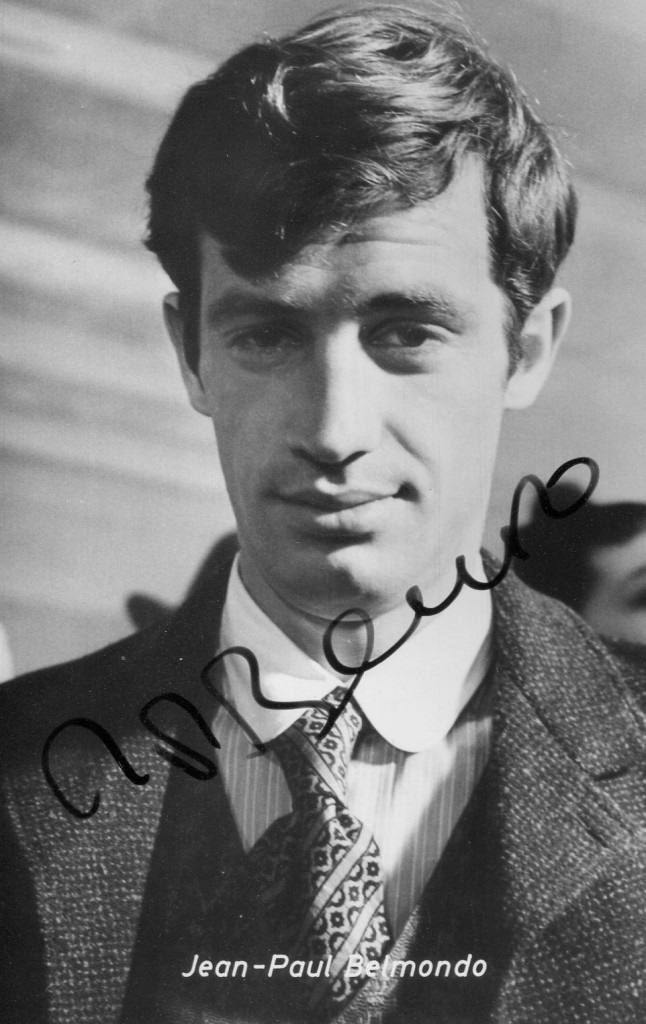
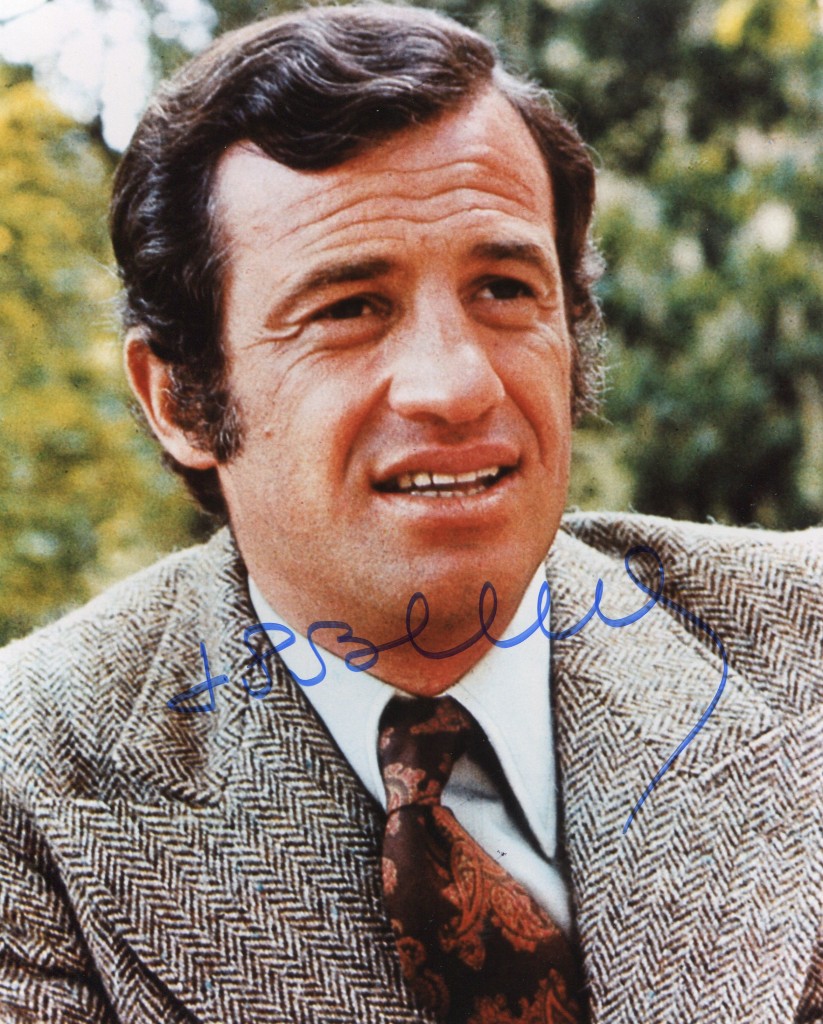
Jean-Paul Belmondo. TCM Overview
‘New blood, new looks, new vitality, new fluidum, new eroticism, new normality for that malady-ridden strain of to-day’s neurotic actors’ – Marlene Dietrich’s ‘ABC’ under B for Belmondo. – David Shipman in “The Great Movie Stars – The International Years”. (1972)
Jean-Paul Belmondo was born near Paris in 1933. In his youth he was a boxer and a footballer. In 1960 he had a huge success in French cinema with his performance in “Breathless” with Jean Seberg. He went on to make “Leon Morin, Priest” and “That Man From Rio”. In 1970 he starred with Alain Delon in “Borsalino”. He has acted also on the stage.
TCM Overview:
For generations of French filmgoers and lovers of international cinema, few actors defined the Gallic male on screen more succinctly than Jean-Paul Belmondo. Though rugged and unconventionally handsome, Belmondo’s innate charm and physicality captured the world’s attention with his turn as a doomed small-time crook in Jean-Luc Godard’s “Breathless” (1960), one of the vanguards of the French New Wave. The film’s global popularity minted him as an icon of cinematic cool, an image he would underscore for the next four decades in arthouse-minded projects like Godard’s “Pierrot le Fou” (1965) and Francois Truffaut’s “Mississippi Mermaid” (1969). At the same time, he proved himself as a capable and highly athletic action star, often providing his own daring stunts in “That Man from Rio” (1964), “Borsalino” (1970) and “The Professional” (1981). He returned to stage work and more sedate fare in the late 1980s and ’90s, earning a Cesar for “Itinéraire d’un enfant gâté” (1988) and high praise for a modern-day take on “Les Misérables” (1995) before suffering a paralyzing stroke. Though physically limited, he returned to features in 2008 for the melancholy “A Man and His Dog” (2008). Though no longer the robust, roguish figure of his youth, Belmondo’s inherent strength and spirit remained intact, providing an inspiring reminder of why he remained a French national treasure for nearly half a century.
Born April 9, 1933 in the Parisian suburb of Neuilly-sur-Seine, Jean-Paul Belmondo was the son of sculptor Paul Belmondo. A poor student, he channeled his energies into boxing and football, but by his twenties, decided that acting would be his true calling. He was reluctantly accepted at the Paris Conservatory, whose educators felt that his prospects as a professional actor were slim. Belmondo would spend much of the 1950s in theater before making his screen debut in the 1957 comedy “A pied, a cheval et en voiture” (“On Foot, On Horse and By Carriage”). He eventually worked his way up to starring roles with “Sois Belle et Tais-Toi” (“Be Beautiful But Shut Up”) (1957), a crime picture co-starring another up-and-coming leading man, Alain Delon. Belmondo’s breakthrough coincided with the rise of the French New Wave cinema. His young, reckless but romantic thief in Jean-Luc Godard’s “A bout de soufflé” (“Breathless”) (1960) epitomized the movement’s rejection of old standards of storytelling and characterization. The film’s popularity among young moviegoers on both sides of the Atlantic helped to make Belmondo an international star with the same cultural impact as James Dean or Marlon Brando, with young men adopting his casual slouch and rough-hewn charm.
Belmondo soon became the actor of choice for other New Wave directors, playing daring, forward-thinking young men who challenged the establishment in Vittorio De Sica’s “Two Women” (1960) and Jean-Pierre Melville’s “Léon Morin, Priest” (1961), which earned him a BAFTA nomination as a young priest who inspired both faith and emotion in Emmanuelle Riva’s disillusioned war widow. He would also reunite twice with Godard, first for the musical comedy tribute “A Woman is a Woman” (1961) and later, as the lead in his postmodern, genre-bending “Pierrot le Fou” (1965). At the same time, Belmondo was finding great success as the athletic hero of mainstream features like the period swashbuckler “Cartouche” (1962) with Claudia Cardinale and Philippe De Broca’s action-thriller “That Man from Rio” (1964). These films, along with the comedy-romance “La chasse à l’homme” (“Male Hunt”) (1964) with sisters Catherine Deneueve and Francoise Dorleac, soon replaced arthouse fare as Belmondo’s projects of choice. Belmondo also served as president of the French actors’ union in 1963, the same year he published his autobiography, 30 Years and 25 Films.
Belmondo soon settled into a string of energetic action features like “Les tribulations d’un Chinois en Chine” (“Up to His Ears”) (1965), many of which were produced through his own company, Cerito. There were occasional forays into English-language filmmaking, like “Is Paris Burning?” (1966), in which he and other young lions of French cinema like Delon and Jean-Pierre Cassel played leaders of the French Resistance, and a cameo in the overblown “Casino Royale” (1967). But Belmondo remained resolutely faithful to French cinema, and continued to divide his time between popular entertainment like the caper film “The Brain” (1968) and “Borsalino” (1971) with Delon, and collaborations with New Wave mainstays like Louis Malle with “The Thief of Paris” (1967), Francois Truffaut with “Mississippi Mermaid” (1969) and Claude Chabrol with “Docteur Popaul” (“High Heels”) (1972).
Alain Resnais’ “Stavisky” (1974) earned Belmondo some of the best reviews of his career as the real-life embezzler whose elaborate surety scheme unseated Prime Minister Camille Chautemps in the 1930s. But its failure at the box office seemed to sour the actor on arthouse projects, so he devoted himself to action and crime thrillers for much of the next two decades. He began a profitable collaboration with director Georges Lautner as the anti-hero of such action-packed films as “Flic ou Voyou” (“Cop or Hood”) (1979) and “The Professional” (1981), which frequently featured Belmondo performing his own stunts. In the late ’80s, with his status as an action star on the wane due to age, Belmondo returned to the stage, and soon divided his time between popular tours in Cyrano de Bergerac, among other productions, and more arthouse-minded film projects. In 1988, he won the Cesar as a wealthy man who staged his own death in Claude Lelouch’s “Itinéraire d’un enfant gâté” (1988).
Belmondo continued to work well into the 1990s, most notably in Lelouch’s “Les Misérables” (1995) as the film’s modern-day Jean Valjean figure. He spent much the decade reaping national rewards for his body of work, including appointment as Officer of the Legion of Honor in 1991 and Commander of the National Order of Merit in 1994. In 2001, he suffered a debilitating stroke that left him partially paralyzed. Belmondo spent the next seven years recuperating, but returned in 2008 for “A Man and His Dog” (2008), a semi-remake of De Sica’s “Umberto D.” (1952) with Belmondo as an aging, debilitated pensioner who was cast out by his landlady lover after she decided to marry another man. The film generated controversy in the European press, with critics alternately praising Belmondo’s courageous performance or condemning the film for showing a national icon in such an unkind light.
By Paul Gaita
This TCM overview can also be accessed online here.
Jean-Paul Belmondo died aged 88 in September 2021.
Guardian obituary in September 2021.
Jean-Paul Belmondo, who has died aged 88, was the actor who more than any other epitomised the French Nouvelle Vague. In Breathless (1960), one of the most influential films of the last six decades, the 26-year-old Belmondo played Michel Poiccard, who steals a car in Marseille, kills the policeman who follows him and hides out in Paris with his American girlfriend (Jean Seberg).
What struck one immediately were the thick, sprawling lips – on to which was stuck a Gauloise – the broken nose, and the sunglasses, suit, tie and hat worn as a homage to the great US gangster prototypes, especially Humphrey Bogart. At one stage, Poiccard looks at a film poster, runs his fingers over his lips and sighs: “Bogie.”
Despite the tough exterior, Belmondo gave the impression of fragility, with his pale, delicate skin and soft voice. The New York Times reviewer found him “hypnotically ugly” and “the most effective cigarette-mouther and thumb-to-lips rubber since time began”.
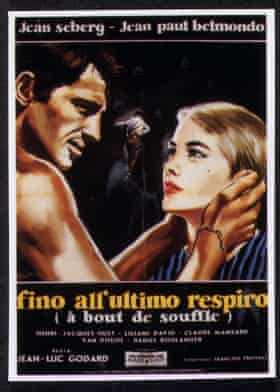
Because of Belmondo’s relaxed, naturalistic acting technique, it was assumed that the dialogue had been improvised, but it was written by the film’s director, Jean-Luc Godard, who nevertheless would not allow the actor to learn his lines but cued him during takes. In the final sequence, the camera chases Belmondo as he continues to run after being shot. As he dies, he looks up at his girlfriend, smiles knowingly and says: “C’est dégueulasse!” (“It’s shitty!”).
Because Belmondo projected an anti-conformist image, he was immediately dubbed “le James Dean français”, and after Paul Newman saw him in Paris in the early 1960s he commented: “Why, he’s one of us.” When Jean Gabin, from the golden age of prewar French cinema, co-starred with Belmondo, the darling of the New Wave, in Un Singe en Hiver (A Monkey in Winter) in 1962, he told him: “Kid, you’re me at 20.”Advertisementhttps://41fff71a0ef42e5734925b483b8ce969.safeframe.googlesyndication.com/safeframe/1-0-38/html/container.html
There was even a wave of “Belmondism”, manifesting itself in a particular style of offhand, narcissistic behaviour. Of his joli-laidlooks, Belmondo commented, “Hell, everybody knows that an ugly guy with a good line gets the chicks.” At the age of 19, he had married a dancer, Élodie Constantin. In 1966 while starring in Philippe De Broca’sUp to His Ears, he and Ursula Andress fell for each other, and Élodie, the mother of their three children, filed for divorce.
In a way, it is absurd that, following Breathless, Belmondo soon chose to withdraw more and more from the New Wave directors and go into commercial films with few artistic demands – vehicle thrillers, adventure movies and acrobatic comedies, in which he became repetitious and self-parodic. The actor Claude Brasseur remarked: “Despite everything, I think it’s a pity for him making popular films because he could enjoy his métier so much more. I remember at the Conservatoire he did astonishing things. Alas, now he has become a sort of stunt man de luxe.”
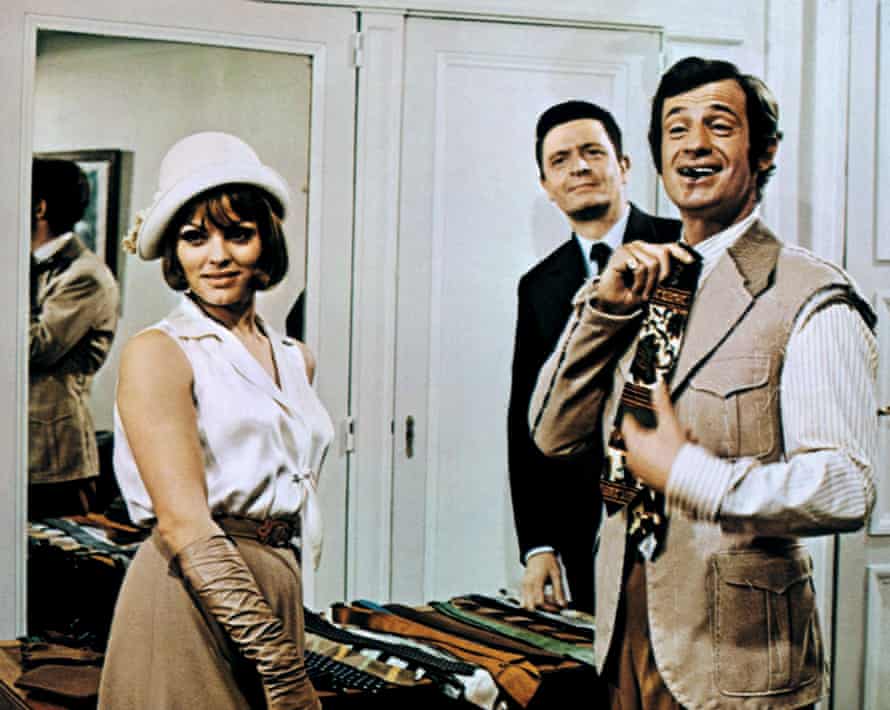
Advertisement
What was most dispiriting about his career was that French audiences seemed to prefer it that way. When reproached, Belmondo replied: “My public expects a certain type of picture, and I’m not going to let them down.” Secure in his pre-eminence, producing many of his films himself, “Bebel”, as he was affectionately known in France, all but guaranteed a hit a year, few of which crossed the Channel or the Atlantic. Belmondo, who did not speak English, never made it to Hollywood, preferring to make American-type gangster movies such as Borsalino (1970), opposite Alain Delon, who shared top place in the box-office polls.
“Nothing impresses him. No danger, no risk, nothing serious, nothing important, nothing explained,” said the journeyman director Henri Verneuil, with whom Belmondo made eight pictures. “He never reads a scenario ahead of time. Never thinks out his role. Never says, ‘How was I in the last scene?’ Never makes suggestions.”
He was born in Paris, the grandson of an Italian workman from Piedmont who had emigrated to French Algeria. His father, Paul Belmondo, was a leading academic sculptor and a professor at the École Nationale Supérieure des Beaux Arts, and his mother, Sarah (nee Rainaud-Richard), was a painter. The rebellious Jean-Paul, whose schooldays were turbulent, studied drama at the Paris Conservatory following a brief career as an amateur boxer, and for several years performed in the classics on stage in the provinces before entering the Comédie-Française.
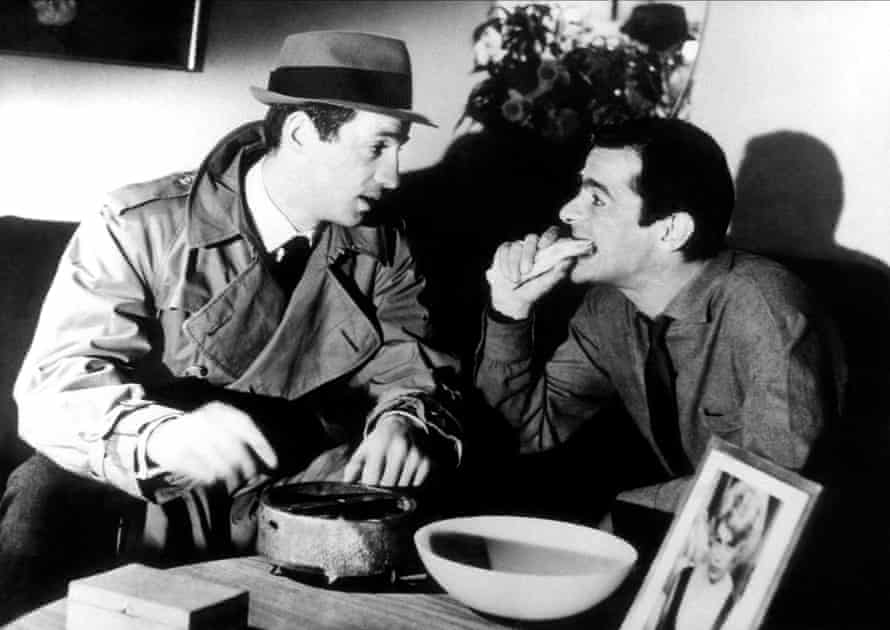
As Breathless was Godard’s first feature, it was assumed, by some critics, that it was also Belmondo’s. In fact, Belmondo appeared in supporting roles in nine films before his “overnight” rise to fame. One of his first roles was for Marcel Carné in Les Tricheurs (The Cheaters, 1958), and the following year his portrayal of Bernadette Lafont’s uncouth Hungarian fiance in Claude Chabrol’s À Double Tour (Web of Passion) prefigured the Breathless character.Advertisement
So strong was the impact of his persona in Breathless that his restrained performances as affectionate and humane characters in Vittorio De Sica’sTwo Women (1960), Peter Brook’s Moderato Cantabile (1960) and Jean-Pierre Melville’s Léon Morin, Priest (1961) came as a surprise, revealing an actor of a wider range than his subsequent filmography acknowledges. “He is the most accomplished actor of his generation,” claimed Melville. “He can play any given scene in 20 different ways, and all of them will be right.”
Belmondo made two further films for Melville, both in 1963: Le Doulos (The Finger Man) and L’Aîné des Ferchaux (Magnet of Doom). In the former, he suppressed his magnetic charm in the part of a sly, safecracking stool pigeon. But it was Godard who gave him his last great role, in Pierrot le Fou (1965). Belmondo as Ferdinand, dissatisfied with Parisian life, and with his wife, sets off on a picaresque journey to the south with Marianne (Anna Karina), getting involved with her criminal activities on the way.
There was a similarity between Ferdinand and Michel Poiccard – both are on the run, both are unable to assimilate into society, and each is betrayed by the woman he loves. However, Ferdinand is a more romantic and intellectual figure, acting out an existential tragedy of the transience of love. At the end, having fatally shot Karina and her boyfriend, Belmondo paints his face blue, places sticks of dynamite around his head and lights the fuse. He has second thoughts, but it is too late. “Damn, it’s too absurd!” he says before being blown up.

With challenging opportunities becoming rarer and rarer after Breathless, his acceptance of roles in François Truffaut’s Mississippi Mermaid (1969) and Alain Resnais’s Stavisky (1974) reminded audiences of his qualities. In the latter, Resnais cleverly subverted Belmondo’s charm and virility, the source of his success as a popular star, to play the notorious real-life conman.Advertisement
In 1987 he returned to the stage to play the title role in Kean, the Dumas drama reinvented by Jean-Paul Sartre, and was an excellent Cyrano de Bergerac three years later, also appearing in Feydeau’s A Flea in Her Ear for his own theatre company at the Théâtre Marigny in Paris. One of his last films to have received an international distribution was Les Misérables(1995), Claude Lelouch’s effective updating of the Victor Hugo classic to the Nazi occupation, with Belmondo in his most challenging screen role since the 60s as an uneducated ex-boxer who befriends an intellectual Jewish family.
In 2001, Belmondo suffered a stroke, which kept him off the stage and screen until his brief return in A Man and His Dog (2008), based on De Sica’s 1952 film Umberto D. Although he had difficulty walking and speaking, he played a character with the same disabilities. However, no matter what Belmondo did, most serious film commentators would continue to see him as the young rebel who rode in on the New Wave.
His second marriage, to the dancer Nathalie Tardivel, ended in divorce in 2008. Their daughter, Stella, survives him, along with a daughter, Florence, and son, Paul, from his first marriage. Another daughter from his first marriage, Patricia, died in a fire in 1994.
Jean-Paul Belmondo, actor, born 9 April 1933; died 6 September 2021
- Liam
- No Comments

Lily Damita was born in 1904 in Blaye, France. She appeared in some German silent films in the 1920’s, some of them directed by her then husband Michael Curtiz. In 1928 she went to Hollywood and starred in “The Rescue”, “The Bridge of San Luis Rey” and “This Is the Night”. In 1935 she married her second husband the actor Errol Flynn. They had a son together Sean Flynn. Sean Flynn was originally an actor and them became a photographer and journalist who disappeared on assignment in Viet Nam during the conflict in 1970. Damita funded searches for Sean Flynn to no avail. She died in 1994 in Florida at the age oif 89.
Her “Independent” obituary by David Shipman:
LILI DAMITA was a pretty, talented star actress of early talkies, though now chiefly remembered as the wife of Errol Flynn, who called her – if not to her face – ‘Tiger Lil’.
They met on a transatlantic liner in 1935. He was a bisexual adventurer hoping for a career in show- business after making a semiprofessional film in his native Australia. In Britain he had played roles with the Northampton rep, and a fleeting appearance in the West End brought the offer of the lead in a Warner Bros ‘quota quickie’, on the strength of which he was summoned to Hollywood.
Damita was born in France, started dancing professionally at 16 and made her film debut in 1922. She was trouping in Berlin with a company managed by her mother when more movies were offered, if not with significant roles – though she appeared in two made by Germany’s leading director, GW Pabst.
In 1926 she starred in The Queen was in the Parlour, by Noel Coward, filmed by Michael Balcon’s Gaumont-British in a coproduction with the renowned German studio Ufa. But her international career remained on hold till she met Sam Goldwyn in Berlin in 1928.
The advent of Pola Negri and more especially Greta Garbo had caused Hollywood to look more closely at Europe’s female stars. Audiences accepted several movie queens as vamps but, even in the era of the flapper, it was safer to have such stories set in decadent old Europe. Goldwyn had already decided to split up the team of Ronald Colman and Vilma Banky, so he cast Damita as the young wife of an elderly politician who dallies with Colman in The Rescue (1929), a so-so version of Conrad; but with the coming of talkies he feared that her accent would be as much an obstacle as Banky’s. Damita worked on it while on loan to MGM for The Bridge of San Luis Rey (1929), based on Thornton Wilder’s novel, and was signed by Fox for her first talkie, The Cockeyed World (also 1929), as the fiery senorita fought over by Sergeant Quirt (Edmund Lowe) and Captain Flagg (Victor McLaglen).
This was a sequel to What Price Glory? (1926), when their bone of contention had been Dolores Del Rio, and it enjoyed the same phenomenal popularity. Unfortunately, Hollywood was awash with exotic beauties, partly because of Del Rio’s success, and Damita didn’t work again until Paramount cast her as a French orphan who poses as Gary Cooper’s wife in Fighting Caravans (1931) – by which time the arrival of Marlene Dietrich had renewed interest in femmes fatales. RKO made Damita the young wife attracted to a stepson of her own age in The Woman Between (1931), and in Friends and Lovers (also 1931) she was the wife of a sadistic Eric von Stroheim.
Goldwyn dropped her, partly because her frankness with the press about her millionaire lovers was of dubious value at the box-office. She later said that her contract forbade marriage, but she managed a clandestine one about this time, after announcing that she would not, after all, wed Prince Louis Ferdinand, the son of the Crown Prince of Germany.
That last relationship was used by the writers of an Edward G. Robinson vehicle, I Loved a Woman (1931). The Robinson character was a recognisable amalgam of two Chicago tycoons, and in the same vein Warners came up with The Match King (1932), with Warren William as a thinly disguised Ivar Kreuger. Damita played the temperamental German star with whom he is so besotted that he sees his fraudulent fortune disappear, only to lose her to an obscure violinist in the last reel – almost the only element of the role which was not drawn from her own life.
As movie offers ceased Damita returned to the stage, but was sacked after a few days in a musical, Here’s How (1934), supposedly because she could no longer deliver across the footlights but almost certainly because she was too demanding. She walked out of a British film on realising that her role was subsidiary to that of Gertrude Nissen, but stayed to play Jack Buchanan’s girlfriend in a remake of the old farce Brewster’s Millions (1935). It was when returning from that job that she met Flynn.
They became lovers after meeting again on the Warner tennis court and married on a whim, thus presenting the studio with a problem when he became a star overnight in Captain Blood (1935). Warners rose to the occasion and proclaimed her a tempestuous enchantress tamed by their new romantic hero – in contrast to the virginal Olivia de Havilland, his frequent leading lady. Damita was jealous of her and of Flynn’s success and his barely concealed infidelities; after she failed to re-ignite her career in France the couple settled for a life of quarrels, separations and acrimonious attempts at reconciliation.
She became pregnant and after the birth of a son began proceedings for divorce. This was made easier when Flynn was accused of statutory rape by two adolescent members of his fan club; and although he was acquitted the divorce judge awarded her half of Flynn’s property and dollars 1,500 a month. She did not remarry till after his death. Their son, Sean, was briefly an actor in the Sixties, before disappearing, permanently, while photographing the war in Vietnam.
This “Independent” overview can also be accessed online here.






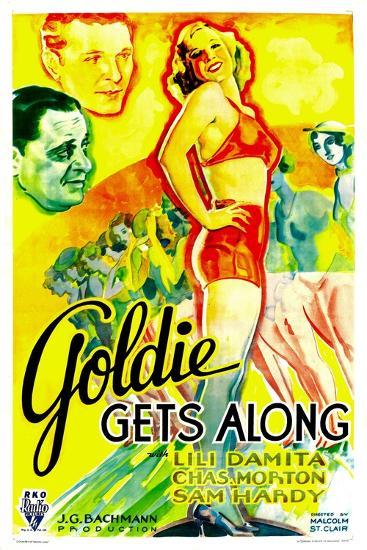

- Liam
- No Comments
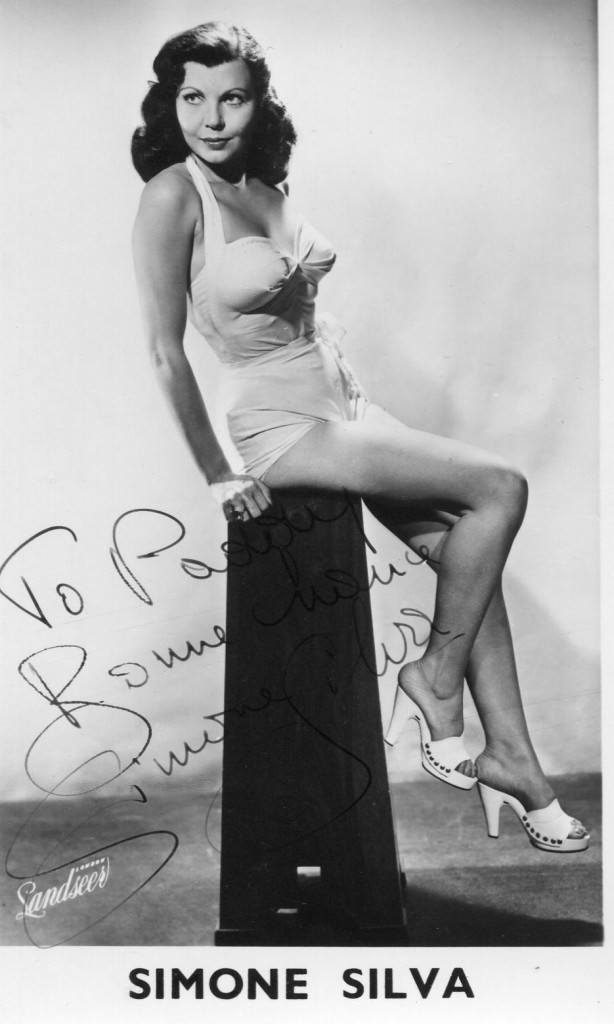
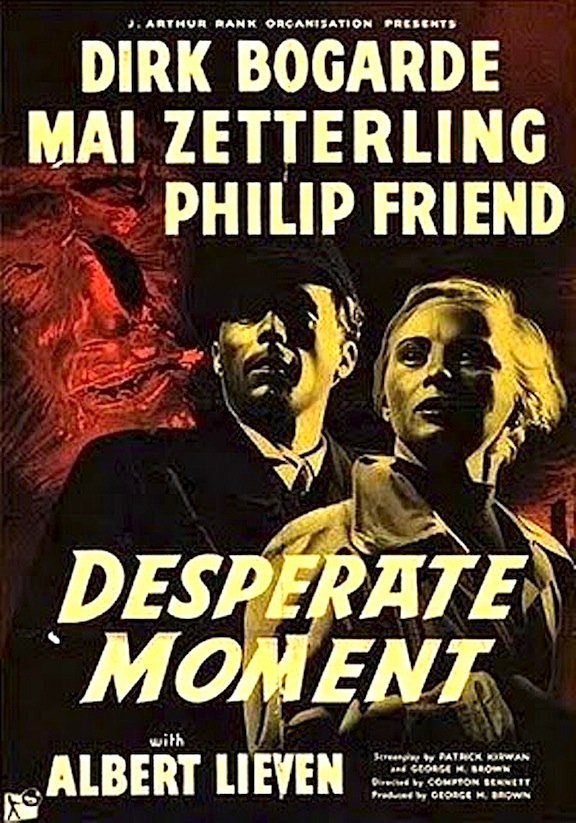
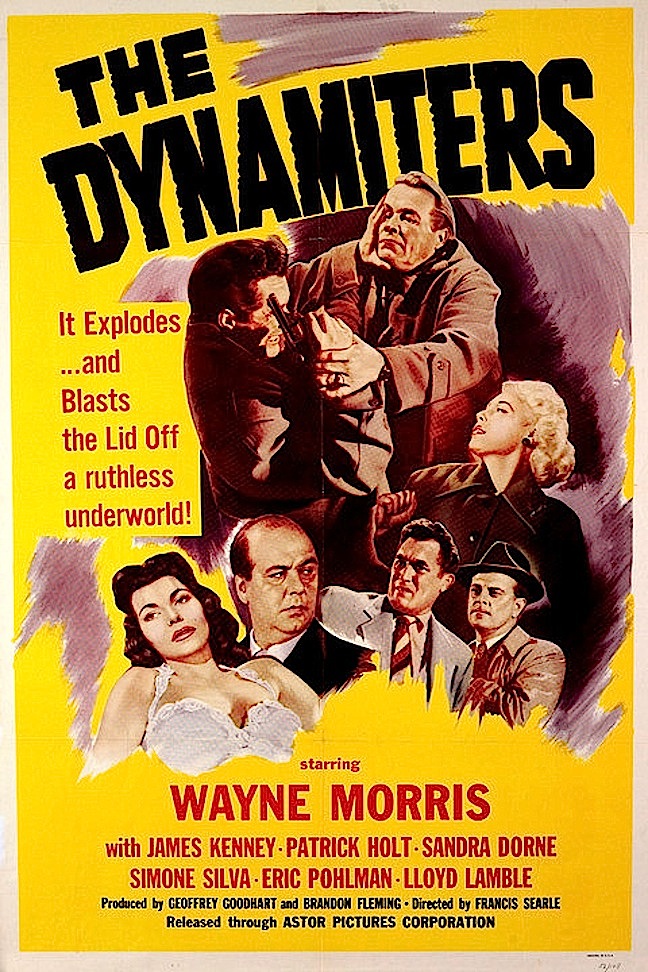
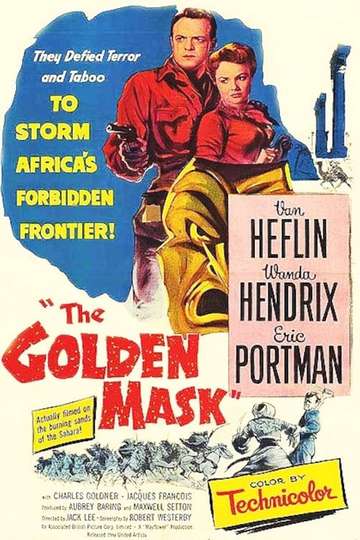

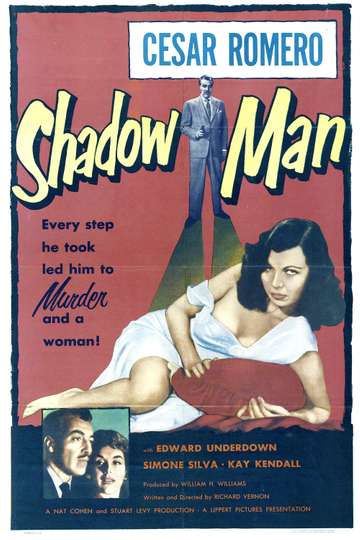
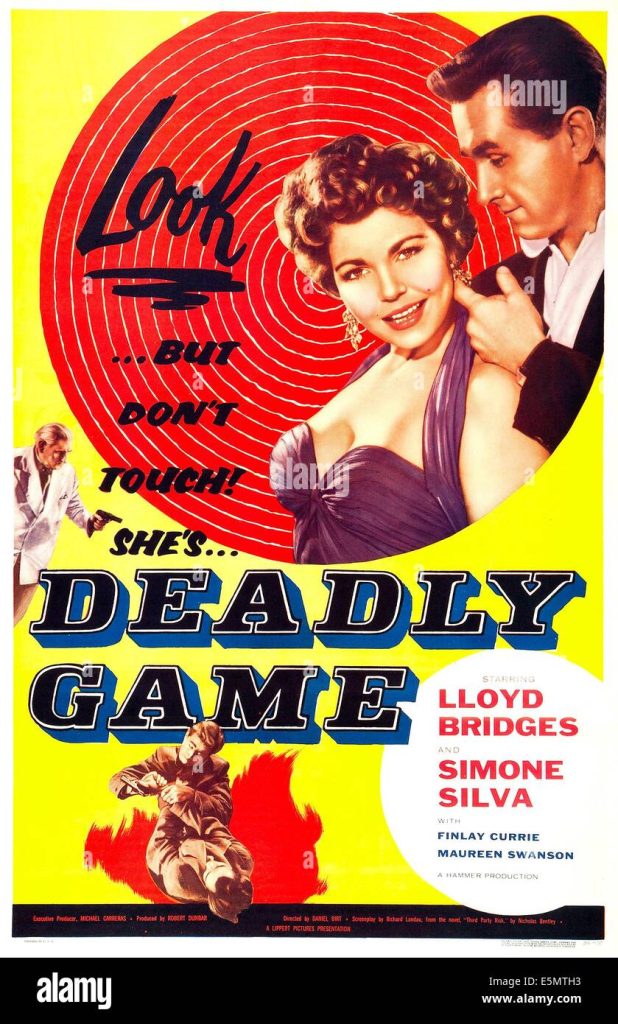
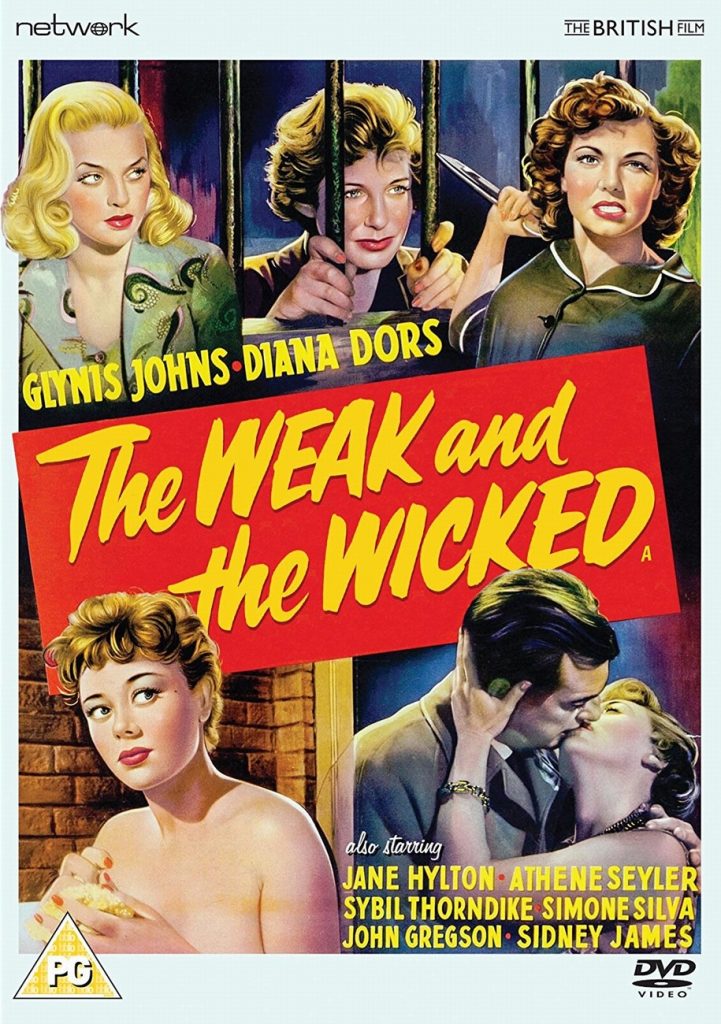
Simone Silva was born in Cairo, Egypt to French parents in 1928. She came to Britain in the late 1940’s and virually all of her acting career was in British films. Her first film was in 1951 in “Lady Godiva Rides Again”. Her other films include “South of Algiers”, “The Weak and the Wicked” and “Third Party Risk”. She died in 1957 at the age of 29 in London.
IMDB entry:
Simone Silva was born to French-Italian parents in Cairo as Simone de Bouillard. She was known mainly in England, where the great majority of her films were produced, as an actress of B-movies, who usually played supporting roles and bit parts.This mostly forgotten actress in some ways was more bright in life than in her very short career. Her tragic death was not entirely the result of natural causes. She was found dead in London’s fashionable Mayfair district after having apparently suffered a stroke likely brought on by a severe diet, as she struggled desperately to return to the screen in perfect shape.
– IMDb Mini Biography By: Yuri Suassuna de Medeiros: yuri.medeiros@gmail.com
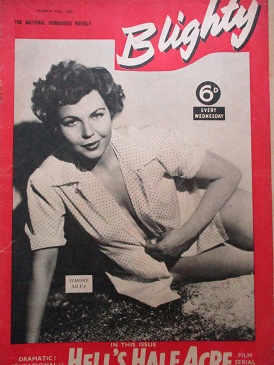
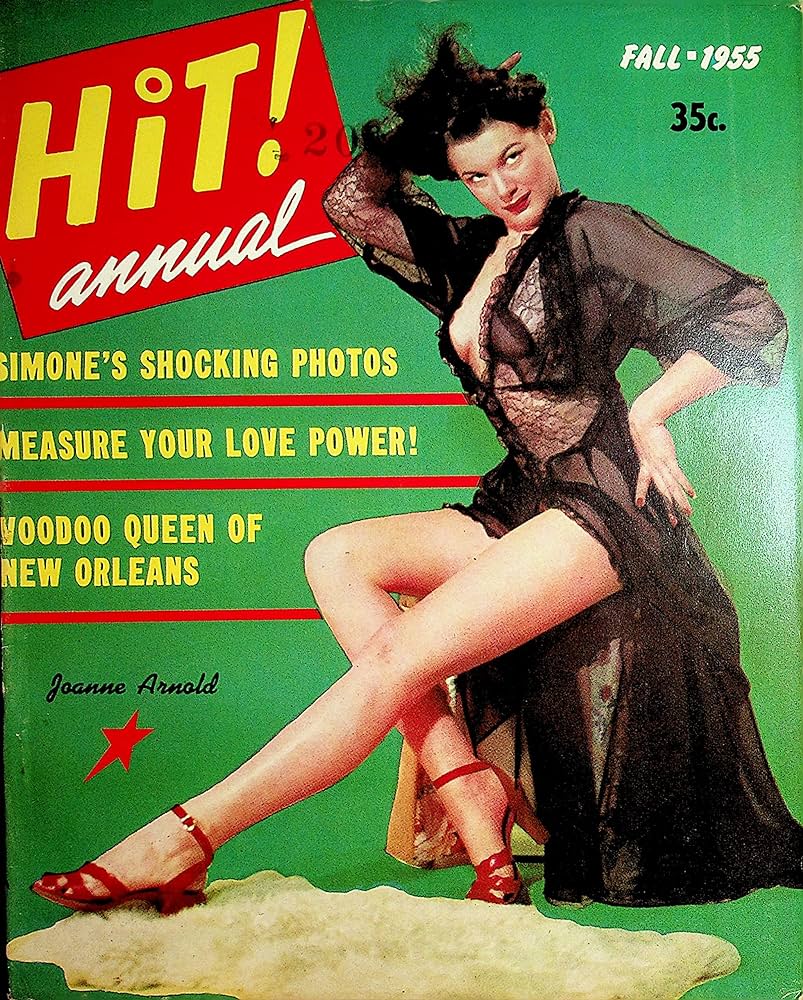
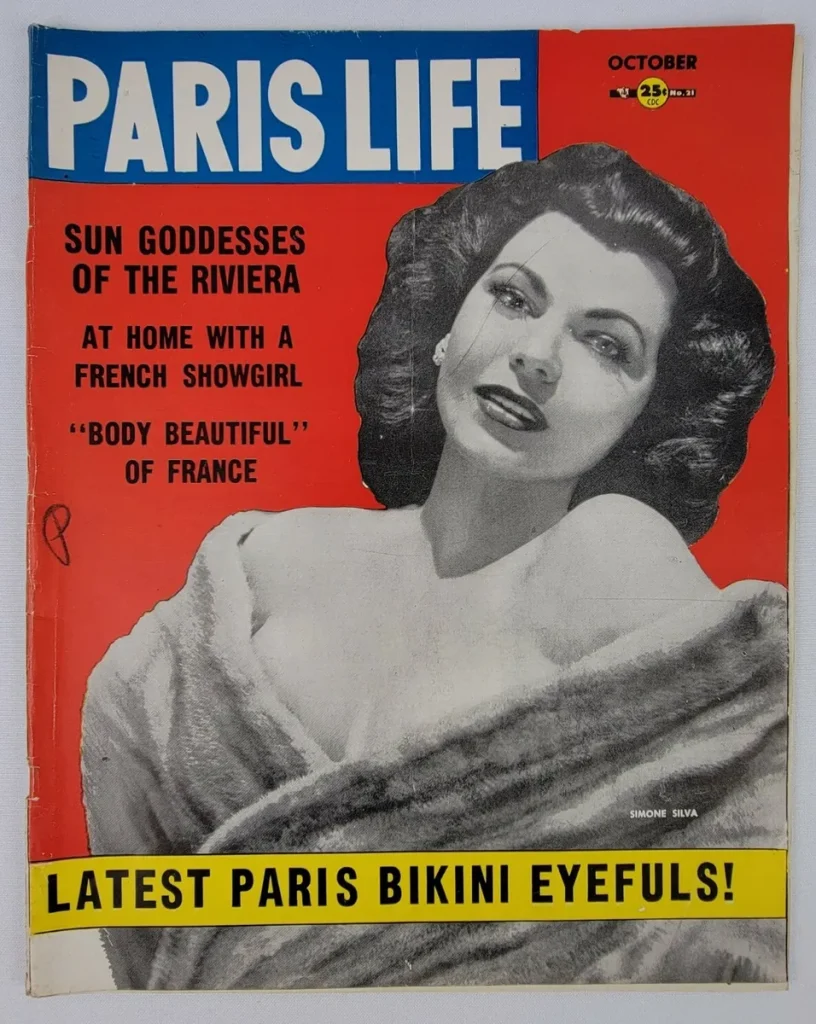
- Liam
- No Comments

Doris Speed will forever be remebered for her role as the snobby Annie Walker the first landlady of “The Rovers Return” in “Coronation Street”. She was 61 before she won the role. She spent years acting in regional theatre in the North of England . While not working she worked in various establishemnts such as in the offices of the Gunness brewery in Manchester. There seems to be only one film role in her credit’s, 1960’s “Hell Is a City” with Stanley Baker. She starred in “Coronation Street” from it’s inception in 1960 until 1983. Doris Speed died in 1994 at the age of 95.
Her IMDB entry:
Doris Speed was one of Britain’s best-loved soap actresses, fondly remembered for her portrayal of Annie Walker, the snooty landlady of the Rovers Return pub in ITV’sCoronation Street (1960). She played the role for 23 years and was dubbed by the press as ‘The Queen Mother of Soap.’
Born in Manchester, her father George was a singer and her mother Ada a repertory actress. She toured with both her parents as a child. She later left the stage to work as a clerk in the giant Guinness brewery in Manchester and remained with the company for several years.
‘Coronation Street’ creator Tony Warren became a close friend of Speed and wrote the part of Annie Walker specifically for her. She joined the series when it was first aired in 1960 and appeared in 1,746 episodes. Hugely popular with viewers she received more fan mail than any other member of the cast.
Offstage she was a shy and retiring person but a keen theatre-goer. She once said “I would love to have done more theatre work because that is how I started. There are so many roles I would love to have played. But I owe my life to ‘Coronation Street’ and I don’t regret a minute of it.”
She was awarded the MBE (Member of the Order of the British Empire) for her services to television in 1977 and received The Pye Television Award two years later. She was also an honorary member of the Licensed Victuallers’ Association. Doris made her final television appearance in 1993, when she gave an interview on Classic Coronation Street(1993), alongside her former screen son, Kenneth Farrington.
– IMDb Mini Biography By: Patrick Newley
The above IMDB entry can be accessed online here.
- Liam
- No Comments















Beryl Reid was born in 1919 in Hereford, the daughter of Scottish parents. Her first major successful was as the schoolgirl Monica in the BBC radio series “Educating Archie”. One of her first films was “The Belles of St. Trinian’s” in 1954. She went on to make “The Extra Day” and “Two Way Stretch”. She scored a personal triumph on stage with Eileen Atkins in London in 1966 with “The Killing of Sister George”. They both went onto Broadway with the play and then Beryl Reid made the film version with Susannah York replacing Eileen Atkins. Beryl Reid was hilarious on television in “The Irish R.M” in the 1980’s. She died in 1996 at the age of 77.
“Independent@ obituary:
As the tough lesbian radio actress June Buckridge in The Killing of Sister George, on stage and film, Beryl Reid became a household name and proved that she could play straight roles with the same dramatic power with which she captivated audiences in comedy. The original stage tour of Britain emptied theatres in droves, as a shocked nation walked out on the controversial drama, but the reaction from audiences in London’s West End was different and the play became a legend, with Reid repeating the role on Broadway and on screen.
It seemed a long way from the cheerful actress whose background was in variety and who was best known for her characterisation of the schoolgirl Monica in the legendary radio series Educating Archie. Comedy always seemed Reid’s natural forte, but she would occasionally switch to drama to remind everyone that her repertoire was wide. As Connie in the television thrillers Tinker, Tailor, Soldier, Spy and Smiley’s People, she again gave a performance of great intensity. As a result, she was an actress who largely avoided typecasting, although even in comedy she would often be seen as the embittered, waspish or poker-faced woman as she grew older.
Born in Hereford of Scottish parents, Reid worked as a junior at the Kendal Milnes department store in Manchester on leaving school, encouraged to do so by her estate agent father, who saw it
Reid made her London theatre debut in the revue After the Show, at the St Martin’s Theatre, in 1951, and three years later made her name at the New Watergate Theatre in First Edition, Second Edition and Autumn Revue. Such revues were the bread and butter of London theatre in the days of variety and Reid rose to the top of the bill as a singer, dancer and comedienne. In 1956, she performed her own act and appeared in sketches in Rockin’ the Town, a revue at the Palladium.
By this time, the actress had also made her name on radio, initially in her own show, A Quarter of an Hour with Beryl Reid, which ran for 24 weeks. It was during a spot on Henry Hall’s Guest Night that she brought to a wider audience the ghastly schoolgirl character that she had created on stage. This led to her own Starlight Hour radio series, in 1952, during which the character was christened Monica.
She followed this in the same year with the legendary radio show Educating Archie (1952-56), which featured Peter Brough and his ventriloquist’s dummy, Archie Andrews, as a naughty schoolboy. The show made Reid a national celebrity, famous for her Monica monologues and adding to it another of her characters from summer shows, a char known as Marlene of the Midlands. She claimed that both were based on acquaintances, a girl at school who once said, “I can’t make up my mind whether to wear a coat or carry a mac,” and a stepdaughter who exclaimed, “She’s my best friend and I hate her.” Reid took the characters of Marlene and Monica, along with society do-gooder Mrs Shin-Bone, to another BBC radio series, Good Evening, Each (1958).
As one of radio’s top comediennes, Reid soon found herself in demand for television work. After a straight role in the BBC production of Mr Bowling Buys a Newspaper (1956) she landed her own series, playing Arethusa Wilderspin in The Most Likely Girl (1957), but was as busy as ever on stage. She appeared in the revues One to Another (1959) at the Lyric Theatre, Hammersmith, before transferring to the Apollo, On the Avenue (1961) at the Globe, and All Square (1963) at the Vaudeville.
She also had a successful broadcasting partnership with comedian Jimmy Edwards, although the pair showed their serious sides by starring on radio in Twelfth Night (1962), in which she played Maria, and The Merry Wives of Windsor (1962). Reid teamed up with Edwards as Bessie and Ernie Briggs for the television play Man O’Brass (1963) and subsequent series Bold as Brass (1964), and starred with Barbara Windsor in another series, The Hen House (1964).
In 1965, she was offered the straight role that was to change the direction of her career and give Reid the acclaim she sought as a dramatic actress. Frank Marcus’s play The Killing of Sister George saw her cast as June Buckridge – Sister George of the title – whose imminent sacking from the cast of a radio serial is accompanied by the disintegration of the star’s relationship with her girlfriend, played by Eileen Atkins. It was a controversial drama, whose theme of lesbianism saw many audiences leave their seats during the pre-London tour, which began at the Bristol Old Vic in April 1965. Despite this reaction in the provinces, The Killing of Sister George opened two months later in the West End, at the Duke of York’s, to full houses and critical plaudits. It also won Reid the Antoinette Perry Award as Best Actress. After almost 18 months in the West End, the production arrived on Broadway, in October 1966, with Reid repeating her role and winning a Tony Best Actress award. Of her character, she said: “If I’d played her for sympathy, I’d never have got any. So I made her as tough as old boots.”
Her talents as a straight actress were brought to an even wider audience when she starred in the film version, made by director Robert Aldrich in 1968, although many local authorities in Britain banned cinemas from screening it.
Since her 1940 screen debut in the George Formby comedy Spare a Copper, Reid’s film appearances had been sporadic. She followed it with the role of Miss Dawn in The Belles of St Trinian’s (1954) and parts in pictures such as Two-Way Stretch (1960) and The Dock Brief (1962). After her stage success in The Killing of Sister George, she was in demand for films such as Inspector Clouseau (1968), The Assassination Bureau (1968) and Star! (1968) and followed the film version of the play with big-screen appearances in Entertaining Mr Sloane (1970), Father Dear Father (1972), No Sex Please – We’re British (1973), Joseph Andrews (1976) and Yellowbeard (1983), often in “guest-star” roles.
Her television career followed the same pattern. She had her own variety shows on the BBC, such as Beryl Reid Says Good Evening (1968), The Beryl Reid Special (1977) and Beryl Reid (1980), starred as Mrs Marigold Alcock with Richard O’Sullivan in the situation comedy Alcock and Gander (1972) and made guest appearances in dozens of series, including The Goodies, Doctor Who, Minder, The Beiderbecke Tapes, Bergerac, Boon and Perfect Scoundrels. This ability to mix comedy with drama also resulted in her playing Mrs Malaprop in The Rivals (1970), Mrs Squeers in Smike (1974), the Postmistress General in The Apple Cart (1975), Mrs Knox in The Irish RM (1983), Grandma in The Secret Diary of Adrian Mole Aged 13 3/4 (1985) and The Growing Pains of Adrian Mole (1987), Mum in The Comic Strip Presents . . . Didn’t You Kill My Brother? (1987) and Robbie Coltrane’s mother in Cracker (1993).
But Reid was most successful on television as the decrepit Connie Sachs in John Le Carre’s Tinker, Tailor, Soldier, Spy (1979) and its sequel, Smiley’s People (1982), the second series winning her a BAFTA Best Actress award, after being nominated in the same category for her performance in the first series.
.
Wikipedia entry here.















Although she spent much of her time on television, Reid continued to work in the theatre, playing Madame Arcati in Blithe Spirit (1970) at the Globe, Frau Bergmann in the National Theatre production of Spring Awakening (1974), Kath in Entertaining Mr Sloane (1975) at both the Royal Court and Duke of York’s, Lady Wishfort in The Way of the World (1978) for the RSC at the Aldwych, and Maud in Born In the Gardens (1980) at the Globe, which won her the Society of West End Theatres Award for Best Comedy Performance. In 1986 she was appointed OBE in the New Year Honours List and was presented with a Variety Club of Great Britain award for her contribution to showbusiness. In 1991, she also won a Lifetime Achievement award for Comedy presented at the British Comedy Awards.
All her life, Beryl Reid suffered from dyslexia – word-blindness – and, in later years, the bone-crumbling disease osteoporosis, which resulted in her doing less work. Her autobiography, So Much Love, was published in 1984, and she was also the author of Cat’s Whiskers (1986), Beryl, Food and Friends (1987) and The Kingfisher Jump (1991).
Beryl Elizabeth Reid, actress: born Hereford 17 June 1919; OBE 1986; married 1950 Bill Worsley (marriage dissolved), 1954 Derek Franklin (marriage dissolved); died 13 October 1996
- Liam
- No Comments
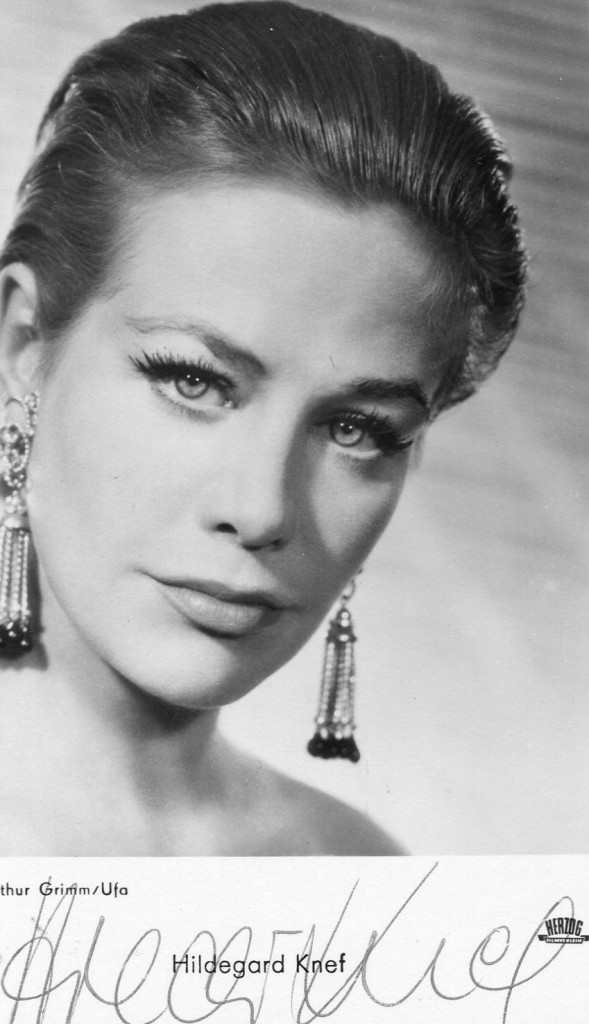
Hildegard Knef was born in 1925 in Ulm in Germany. She began studying actiong in 1940 and made some films before the fall of the Third Reich. Her first international film was in 1951 in “Decision Before Dawn” with Oscar Werner. She won a contract with 20th Century Fox and in Hollywood she made “The Snows of Kilimanjaro” with Gregory Peck, Ava Gardner and Susan Hayward” and “Diplomatic Courier” with Tyrone Power. She starred on Broaway in “Silk Stockings” in 1955 and also had a successful career as a singer. Knef was also an acclaimed writer. She died in 2002 at the age of 76.
IMDB entry:
Hildegard Frieda Albertine Knef was born on December 28, 1925 in Ulm, Germany. In 1940, she began studying acting. Even before the fall of the Third Reich, she appeared in several films, but most of them were only released after the war. To avoid being raped by Soviet soldiers, she dressed like a young man and was sent to a camp for prisoners of war. She escaped and returned to war-shattered Berlin where she played her first parts on stage. The first German movie after World War II, Murderers Among Us (1946), made her a star. David O. Selznick invited her to Hollywood and offered her a contract – with two conditions: Hildegard Knef should change her name into Gilda Christian and should pretend to be Austrian instead of German. She refused both and returned to Germany. In 1951, she provoked one of the greatest scandals in German film history when she appeared naked on the screen in the movie Sunderin (1951). The Roman Catholic Church protested vehemently against that film, but Hildegard just commented: “I can’t understand all that tumult – five years after Auschwitz!”
With the support of her first husband, the American Kurt Hirsch, she tried a second time to launch a Hollywood career, changed her family name from Knef to Neff (because Americans could not pronounce Knef), but the only worthwhile part she got was a supporting role in the Hemingway adaptation of The Snows of Kilimanjaro (1952). She became a leading lady in German, French and British films. Finally, America offered her another chance, this time on the stage. She achieved a kind of stardom as Ninotchka in the very popular Broadway play, “Silk Stockings”. In 1963, she began a new career as a singer and surprised the audience with her typical, deep, smoky voice and the fact that many lyrics of her songs were written by herself. In 1970, she wrote the autobiographical bestseller “Der Geschenkte Gaul”. She got sympathy from all over the world for her fight against cancer, which she defeated several times.
The above IMDB entry can also be accessed online here.
- Liam
- No Comments
Sites of Interest
These are some of my favourite film websites. They are a fantastic resource for any film buff.
